No studio in Hollywood releases films that are held up to the same high standard as Pixar. It’s understandable – from the release of 1995’s Toy Story on, the studio has excelled at dominating the animation game in a way no studio had since the inception of Walt Disney Animation. Sure, Disney had some rivals at different points in its history, like the still ubiquitous Warner Bros. shorts or the rise of former Disney animator Don Bluth in the 80s and 90s as the head of an independent animation team. But none of these rivals has had the successful streak that Pixar has demonstrated. Since the inception of the Academy Award for Best Animated Feature in 2001, Pixar has won the award eight times from a total of ten nominations. Of the 16 releases Pixar’s had to date, the first 14 have opened at #1 domestically their opening weekends, while Inside Out broke records when it debuted at #2, and eventually ascended to the #1 spot. That’s why it made sense that after roughly a decade of distribution, Disney bought Pixar outright and made Pixar’s head, John Lasseter, the overall head of Disney’s animation studios. Pixar’s track record, for the longest time, was spotless.
Until it became…spotted.
The 2010s have seen Pixar in an unusual spot: lacking the heightened levels of critical acclaim they held for 15 years, while Disney’s main animation studio reclaimed some of their former glory. To be fair, a streak like Pixar’s run between Toy Story and Toy Story 3 is rare. With the decision to dip back into the well of sequels more frequently over the next few years, will Pixar just be resting on its biggest and best hits? Or will the studio continue to innovate? And how will Pixar do with their latest film, Cars 3? You’ll have to read our review later this week to really find out, but you might get a hint below. With the release of Cars 3, we’re taking an updated look back at all of Pixar’s feature films for Out Ranked.

18. Cars 2
Here’s a general rule of thumb for sequels and spinoffs: the breakout characters who work in small doses rarely work when they’re made the center of the action. For all of Cars 2‘s issues (and there are plenty), the decision to center the film around Mater instead of Lightning McQueen may have been the biggest problem. Cars 2 also marked Pixar’s first non-Toy Story sequel, but while it followed that series’ decision to switch things up in story form for each film, the character relationships just don’t exist for the Cars characters the way they do for Toy Story‘s characters. The worst thing about Cars 2, though, is that if this were, say, a DreamWorks Animation film, it would be perfectly acceptable. But “acceptable” doesn’t cut it when it comes to Pixar.

17. Cars 3
There’s a pretty wide gulf between Cars 2 and the rest of Pixar’s feature film work. Even with the weaker films in Pixar’s lineup, there’s something to most of the films that would put them in the upper echelon of any non-Disney Hollywood animation studio. While Cars 3 is among Pixar’s weaker outings, it’s a considerable improvement over its predecessor. The film is an inversion of sorts to Cars, with Lightening McQueen now on the other side of his racing career. The film deserves some points for its attempts to be inclusive by making the co-lead, Cruz Ramirez, a female car, but the execution is a bit rough – even though Cruz is supposed to be McQueen’s trainer, he ends up not only helping her, but making it seem noble even though it also helps him. The intent is noble, at least.

16. Cars
Here’s the thing: Cars isn’t all that bad. It’s not exactly great, which is why before Cars 2‘s release, it was widely considered the ugly stepchild of the Pixar family. More than any other Pixar story, Cars has a story that’s old-fashioned and nostalgic. Radiator Springs is a product of a certain time, and its inhabitants are largely treated with kindness (with the possible exception of Mater). The problem is that it’s not quite as strong as the string of films Pixar released before it, and the string of films released over the next half decade were far more imaginative in their efforts.

15. The Good Dinosaur
While it’s not the first Pixar film to undergo significant retooling in the middle of production, The Good Dinosaur‘s retooling was significant even by those standards. Director Bob Peterson was replaced, along with nearly the entire voice cast. New director Peter Sohn and writer Meg LaFauve also radically reconfigured the story. The resulting product is an unusual entry in Pixar’s canon. Visually, it’s among the most striking films Pixar’s produced, with the highly abstracted characters placed in settings so vivid, they look like live-action backgrounds. But the story, about a young apatosaurus named Arlo and a human named Spot, is simple to the point of being underdeveloped. It’s a rare Pixar film that seems targeted specifically to young children, at the expense of a broader audience. It’s fine to see Pixar push against the idea of what constitutes a Pixar film, but in the future, hopefully the studio will find better ways to do that.

14. Brave
There are a few placements on this list that may shock readers, and this may be one of the bigger ones. For the record, there are many parts of Brave that work. The animation may be some of the strongest and most unique in the studio’s history, and the film avoided the nasty Disney trend of killing off the mother of the heroine. Where the film loses points for me, though, is in the additions to the film that were obviously meant to reach out to the young boy demographic. Yes, the fart jokes. The general bad boy behavior from pretty much every male character, from adults to Merida’s three young brothers. Their diversions tend to overwhelm large parts of the film, and that it comes in Pixar’s first film with a female protagonist makes it look like Pixar suddenly didn’t know what to do when boys weren’t the primary audience.

13. A Bug’s Life
It’s a testament to Pixar’s ultimate success that their sophomore effort is generally considered one of their lesser efforts. A Bug’s Life is a solid film, and it has some great moments, but it’s clear in retrospect that the studio was still figuring out what made a Pixar film exceptional. For kids, this film will still absolutely have replay value, but the film’s simpler tone may make it more challenging for the adults who grew up with Pixar. That was the case for me, at least. Some of the key ingredients that make many Pixar films rewatchable are present, but they’d be better honed over the next decade.
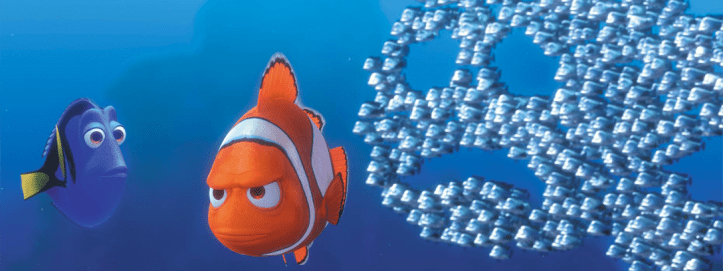
12. Finding Nemo
Years before Up managed to create the most heartwrenching opening to an animated film ever, Pixar managed to hit similar emotional buttons with the opening to Finding Nemo. What makes the film stand out – aside from its gorgeous underwater animation – is its commitment to the dominant theme: letting children live their own lives. It’s a message that’s bolstered by several scenes that are understandably – even convincingly – frightening. The film acknowledges the dangers of the world, while underlining the importance of making sure children are equipped to handle these things instead of being overly sheltered. Plus, there’s the fact that Ellen DeGeneres’ time here gave her the second act to her career that she completely deserved.
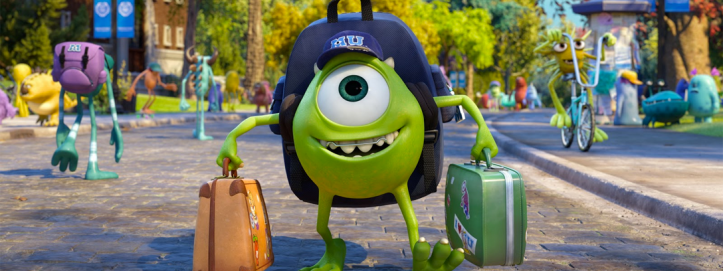
11. Monsters University
Pixar’s first prequel also came at a time where the studio’s output was suddenly, heavily skewed toward preexisting characters. That it followed Cars 2 and Brave probably didn’t help, but Monsters University does have its merits. First, the leaps in animation between Monsters, Inc. and Monsters University was tremendous, and Monsters University shapes this world in a way Monsters, Inc. could only dream. There’s also the development of Mike and Sulley’s relationship, which may be conventional (they hate each other before they love each other), but works thanks to Billy Crystal and John Goodman’s performances. What’s most astonishing about the film, though, is its ultimate message: the idea that you can be whatever you want to be isn’t always true. Sure, Mike and Sulley find a way to achieve their dreams down the road – this is a prequel, after all – but at the very least, they didn’t achieve their dreams in the way they planned. That kind of message takes guts.
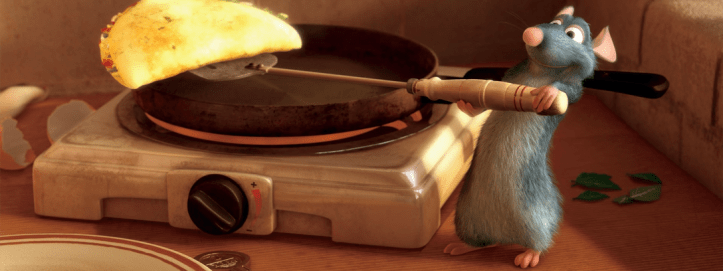
10. Ratatouille
While Pixar had the fortune of putting an impressive first foot forward in 1995, it took just over a decade to see exactly how much trust audiences had with the studio. That trust paid off in a major way with Ratatouille, which provided a kid-friendly message in a package that’s more appealing to older audiences. Sure, Remy is a cute anthropomorphic rat, but he’s a rat with a decidedly refined palette. The film largely takes place in restaurants in France, and the biggest threats have to do with culinary criticism and originality. These aren’t your typical kid-friendly topics. And yet, it worked. It also kicked off perhaps the strongest run of films for Pixar.

9. Up
I’ll go ahead and acknowledge that this ranking will be the most heavily disputed part of the list. This was definitely one of the more contentious listings in my own head as I made the list. Here’s the thing, though: the first ten minutes of Up are some of the most powerful moments Pixar has ever created. If I based the ranking for Up just on those first ten minutes, it’d be #1. But I think people tend to forget everything that comes after the first ten minutes in Up, and while there are great individual moments after the beginning, the film ultimately peaks early. What follows is a bit too conventional, by Pixar standards. In pretty much any other studio’s output, though, it would be a remarkable feat. But don’t take the ranking too hard; we’re entering the point where these rankings could change at any given moment.

8. Finding Dory
A sequel to a successful film that places a greater emphasis on a supporting character who’s good in small doses, but may not work as the protagonist? That would describe any number of Hollywood sequels, including Pixar’s own Cars 2. Add in a buzzy phrase – “origin story” – and it’s easy to understand why Finding Dory seems fated to fail. Surprisingly, though, Finding Dory manages to upend its predecessor. It’s looser structurally than its predecessor, with many of the scenes just barely linked together. Dory, though, is surprisingly deeper than Nemo, exploring mental challenges with a surprising amount of sensitivity. It’s also incredibly funny, with Ellen DeGeneres’ expanded role actually making Dory more endearing. Finding Dory is a welcome reminder that when crafted with care, their sequels are worth watching.

7. Toy Story 3
Fifteen years passed between the release of Toy Story and Toy Story 3, and what made the latter work is that the passage of time created the film’s issues. Beat after beat hammers home that many of the toys audiences grew to love in Toy Story and Toy Story 2 have been shuttled off. Fearing that Andy has abandoned the rest of them for good, the remaining toys decide to make the best of things and become part of a daycare center’s set of toys – except for the ever loyal Woody, who’s determined to return to Andy. The film’s ultimate payoff – including not one, but two major emotional climaxes – is something that the series earns from the emotional connections these characters have made over three films, and it makes the final moments feel like a proper place to end the series. (Toy Story 4, of course, is now in production.)

6. Toy Story 2
It’s worth remembering that Toy Story 2 was never meant to be a theatrical release. Produced during the dark days of Disney’s push for direct-to-video sequels, Pixar created a story with enough potential that Disney fast-tracked it for a theatrical release. And with that switch, Pixar had to rethink the story. Somehow, though, Toy Story 2 managed to exceed any and all expectations. Rather than recycle the first film’s plot points, it delves deeper into the characters of Woody, Buzz and the gang. The film also introduced Pixar’s first truly strong female character, Jessie, and created the first of many heartwrenching Pixar moments with “When She Loved Me.”
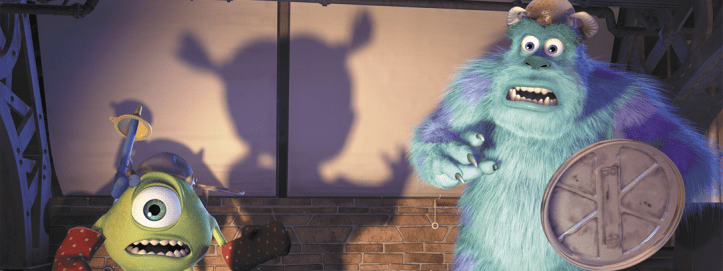
5. Monsters, Inc.
With Pixar’s fourth film, the studio ventured outside of the “real world” where toys and ants are commonplace. Monsters, Inc. represents Pixar’s first attempt at creating completely unique creatures, and they passed with flying colors. The world of Monstropolis shares some similarities with the human world, but with the inclusion of all types of creatures inhabiting the world. The film also initially works as a buddy comedy, but what pushes the film to the upper echelon of Pixar’s films is the introduction of Boo, the adorable human girl who strikes fear into the hearts of monsters. The paternal love that Sulley develops for Boo over the course of their adventure is made all the more devastating when she realizes he scares children, and his attempts to win back her trust make the ensuing adventures all the more emotionally involving. And that ending… That ending shot might be the best one Pixar’s ever had.

4. Toy Story
It’s the film that paved the road for the rest of this list. Twenty years later, there are a few elements that don’t hold up so well – the improvements in technology were already obvious by the time Toy Story 2 came out four years later, and there’s a lot of Randy Newman songs incorporated – but the Pixar formula for success was already present here. It may be a movie about toys, but those toys express so many facets of human emotion, from unconditional love to jealousy and fear. It’s also frequently hilarious, with jokes aimed at children and adults alike. Its sequels may have explored deeper emotions, but Toy Story provided the foundation for those follow-ups.
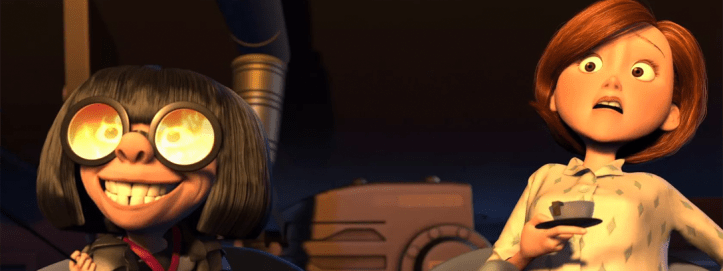
3. The Incredibles
Up until The Incredibles, the creative talent of Pixar had remained the same since the production of Toy Story. The Incredibles marked the first time an outsider had been allowed to create a new story. That outsider, though, was Brad Bird, who’d already gained a reputation with The Iron Giant. The pairing of Pixar and Bird produced cinematic magic, with The Incredibles working as one of the studio’s most energetic features. In a world where superhero films are all the rage, The Incredibles does a better job than any of its live-action counterparts at creating a new world, populating it with characters audiences can relate to, and throwing them up against a compelling villain. There are so many things to love about this film. The 60s influence on design. The spy elements that play into the film’s first half. Michael Giacchino’s impeccable score. Edna Mode with the most sensible superhero design advice ever. The film’s message, though, is what resonates strongest. Being special and unique isn’t something that everyone has within them, and if you are special and unique, you have to find a way to use it.

2. WALL•E
Pixar’s run in the latter half of the first decade of the century is an astonishing feat of commercial and creative achievement, and nowhere is that exemplified better than in WALL•E. The film centers around two robots who can’t speak in complete sentences, and the dialogue is practically non-existent in the film’s first half. The film demands your attention in a way few other films do; the attention to detail here is astounding. On a technical level, all the dirt and dust the film generates in this depiction of Earth is astounding enough to warrant notice. And the critique that takes place when the film shifts settings in the second half is remarkably pointed, something one wouldn’t expect from an animated feature from a mainstream studio. What really cements WALL•E as among Pixar’s best, though, is the titular character. Our hero isn’t on a grand quest to make the world a better place – even though he’s been cleaning Earth on his own for centuries. WALL•E is on a quest for love, and his commitment to EVE just happens to communicate that Earth is at the point where habitation is possible again. The love story of WALL•E and EVE is Pixar’s strongest example of love to date.

1. Inside Out
There are a handful of creative talents at Pixar whose names warrant attention, and director Pete Docter’s should now be among them. After crafting both Monsters, Inc. and Up, he’s become the person behind some of Pixar’s most emotionally compelling films. Little wonder, then, that his latest offering focuses on emotions. More specifically: Joy, Sadness, Fear, Anger and Disgust. The basic story of Riley, the girl who houses these emotions, is among the simpler in Pixar’s canon. Where Inside Out hits home, though, is in how the different emotions come into play, working together or independently to protect Riley. Pixar’s best films come with powerful messages, and Inside Out‘s is a doozy: there’s a place for all of the emotions, including the less desirable ones like Sadness. Accepting that is not just necessary, but good and healthy. And under Docter’s supervision, it hits hard. It’s not just an improvement on his previous work; Inside Out takes the best elements of what people associate with a Pixar film, and creates a film that represents a pitch-perfect blend of Pixar’s signature humor, heart, and appeal to audiences of all ages. It’s going to be a tough act for Pixar to match in the future, but considering they’ve reached this level after two decades, there’s no reason to doubt they can reach this height again.


[…] Source: The Films of Pixar Animation Studios […]
LikeLike